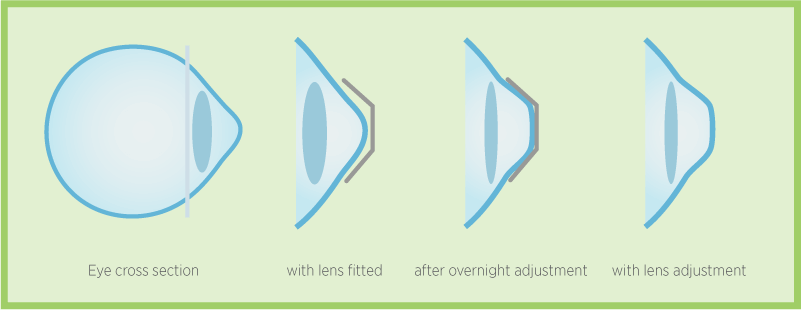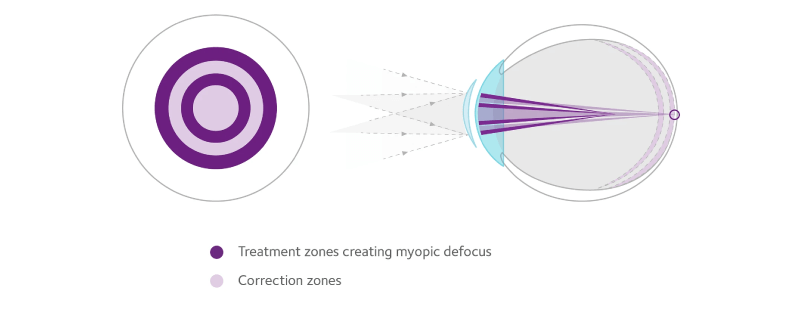Myopia (short-sightedness) happens when the eyeball grows too quickly during childhood or starts growing again in adulthood. Childhood-onset myopia is most commonly caused by the eyes growing too quickly, or continuing to grow after age 10-12 when eye growth should normally stop. Genetics, environment and the individual’s characteristics can all contribute to this excess growth. In younger kids, myopia progresses more quickly because their eyes are growing at a faster rate, leading to higher levels of myopia, stronger spectacles, and more risks to their eye health.
Single-prescription spectacles and contact lenses are the most common ways to correct myopia. However, research and studies show that contact lenses have the advantage of both correcting the blurred distance vision of myopia and being the most widely available and consistently successful option for controlling myopia progression.

Is wearing contact lenses advisable for kids? Absolutely! Watch this short video on how safe contact lenses are for kids and how they can benefit children beyond just not having to wear spectacles anymore.
The two types of therapeutic contact lenses which control myopia progression are orthokeratology night-time lenses and multifocal daytime soft lenses.
Orthokeratology (Ortho-K) Night-time Contact Lenses
Ortho-K is being prescribed by thousands of specialty contact lens practitioners worldwide and has been around for more than 25 years. Ortho-K involves custom-fitting of a rigid contact lens to reshape the surface of the eye, the cornea, by a predetermined amount to correct vision during sleep. The lens is removed on waking, and the wearer experiences clear vision.

Ortho-K treatment does two things for kids with myopia:
- Restores clear vision for the duration of the waking hours, allowing the child to be free from spectacles and daytime contact lenses.
- Slows down, and sometimes stops, the progression of myopia and vision deterioration over time.
These two objectives are achieved by the reshaping process on the eye surface where the central area of the cornea is flattened (to restore clear vision) and the mid-peripheral area is steepened (to control myopia progression).
This independent focusing of central and peripheral vision is an effect that single-vision spectacles cannot achieve, which is why Ortho-K is effective in preventing myopia progression as opposed to single-vision spectacles.
Multifocal Daytime Soft Lenses
Multifocal soft contact lenses (MF SCL) are daytime lenses originally developed for presbyopia, or the condition commonly affecting people over the age 40 which causes increased difficulties with reading and near focusing. These lenses typically have circular zones of varying prescriptions within the lens which give simultaneous focus of far-distance and close-up objects in the eye.

Recent research have found that some particular designs of multifocal soft contact lenses, so-called ‘centre-distance’ lenses (where the centre zone of the lens gives clear far-distance vision and the peripheral zones help with close-up focusing) are also effective in reducing myopia progression in kids who wear these lenses daily. Their ring-like distance and near optical zones somewhat mimic the treatment effect on the eye created by an Ortho-K lens.
Is My Child Suitable to Wear Contact Lenses?
Kids as young as 5 years old can wear contact lenses. However, your optometrist will be the best guide as to which option is most suitable for your child because contact lens wear can depend on their level of myopia, eye shape, if they are responsible enough to wear contact lenses, and more.

